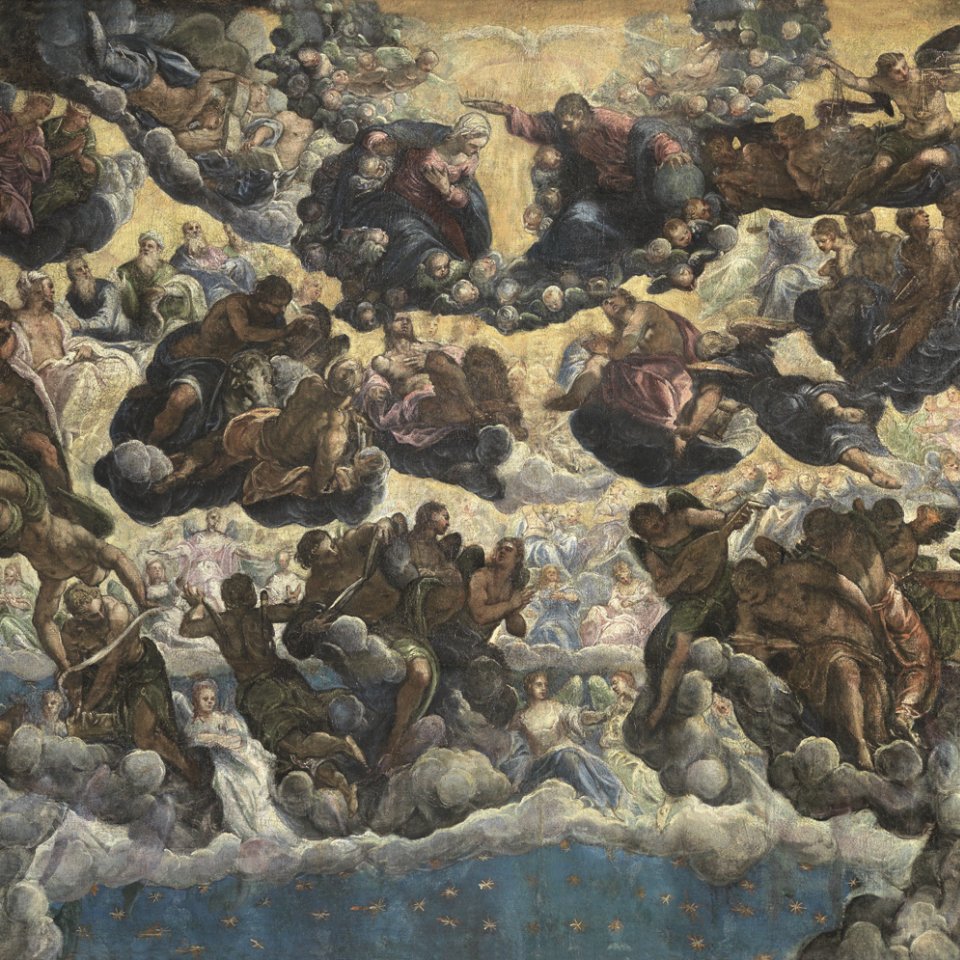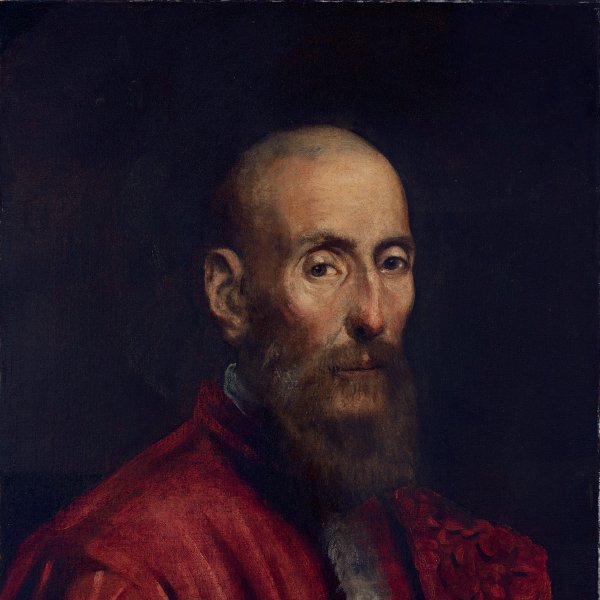Paradise
In December 1577 a fire broke out on the ground floor of the Doge’s Palace in Venice, resulting in serious damage to the decoration, walls, ceilings and furnishings of various rooms and seriously affecting the structure of the building. So great was the damage that the idea of demolishing the old Gothic building and replacing it with a new one was seriously considered. After considerable discussion it was, however, decided to restore the areas affected and to replace the interior decoration. Among the damaged rooms was one of the most celebrated: the Sala del Maggior Consiglio. This large space, whose proportions make it one of the most majestic and imposing in the entire building, was the room where the Great Council met. In the 16th century the Venetian senators who formed the Council numbered more than 1, 000. The room was used for purposes of legislation and for electing members of the magistracy.
It was decided to restore the room with a flat ceiling divided into sections with decorative, high-relief moulding into which paintings would be fitted. The same concept was to be used for the frieze that ran along the two long side walls of the room in which painted portraits of the Doges would be inset. The subject selected to decorate the walls of the room was the Glorification of Venice, depicted through a series of military episodes. Three huge canvases would provide the principal elements in the ceiling. They are a central, rectangular one by Jacopo Tintoretto, depicting The City of Venice offering a laurel Wreath to Doge Nicolò da Ponte; and twoflanking, oval ones in which Veronese painted an Allegory of Venice, and Palma Giovane depicted Venice, crowned by Victory, receiving the conquered Provinces.
To replace the medieval fresco of around 1365 by Guariento, which had been damaged in the fire, the commission entrusted with devising and overseeing the new decoration organised a competition that may have been convened in 1582. The theme of this new image was “a glory of the blessed in Paradise”. Among the painters who took part were Francesco Bassano, whose preliminary oil sketch is now in The Hermitage, St. Petersburg; Veronese, whose design is now in the Musée des Beaux-Arts de Lille; Palma Giovane, whose design is in the Pinacoteca Ambrosiana, Milan; and Tintoretto, who probably presented the painting now in the Musée du Louvre. The commission gave the project to Veronese and Francesco Bassano, two artists with widely differing styles. However, Veronese’s death in 1588 and the fact that Bassano had not started his part by the time of Veronese’s death resulted in the project being given to Tintoretto, who was seventy years old by this date.
The present canvas, considered an autograph work by Tintoretto scholars, is difficult to locate within the story of the replacement of Guariento’s fresco as its composition is closer to the final canvas painted by Tintoretto’s son Domenico than to the oil sketch now in the Louvre in which the figures are arranged in circles. Various theories have been proposed to explain the process. Schulz thought that the present canvas together with the Louvre sketch would have formed part of an earlier project of around the mid-1560s at a time when Tintoretto competed with Zuccaro to replace Guariento’s fresco before the fire. For Pallucchini and Rossi the Louvre sketch is the modello that Tintoretto presented to replace the fresco around 1564, while the present canvas was the one presented by Tintoretto at the competition. This third theory, which is based on the similarities between the final canvas and the present one, maintains that the Thyssen oil was Tintoretto’s new proposal for the decoration of the main wall after Veronese’s death and was independent of the design that he submitted to the competition. According to the guidelines established for the competition, the composition had to focus on the Coronation of the Virgin, inspired by Dante’s Paradise. Tintoretto included the blessed and different religious hierarchies among clouds, angels and cherubim. The principal motif is the Coronation of the Virgin in the upper centre, while the Dove of the Holy Spirit forms the axis of this complex composition. The central group, in which Christ leans forward and extends his hand to crown his mother, emerges between numerous heads and figures against the intense yellow of a cloud of glory. The remaining figures in the canvas are arranged in gently curving lines, floating among clouds and stars.
Mar Borobia
Emotions through art
This artwork is part of a study we conducted to analyze people's emotional responses when observing 125 pieces from the museum.














